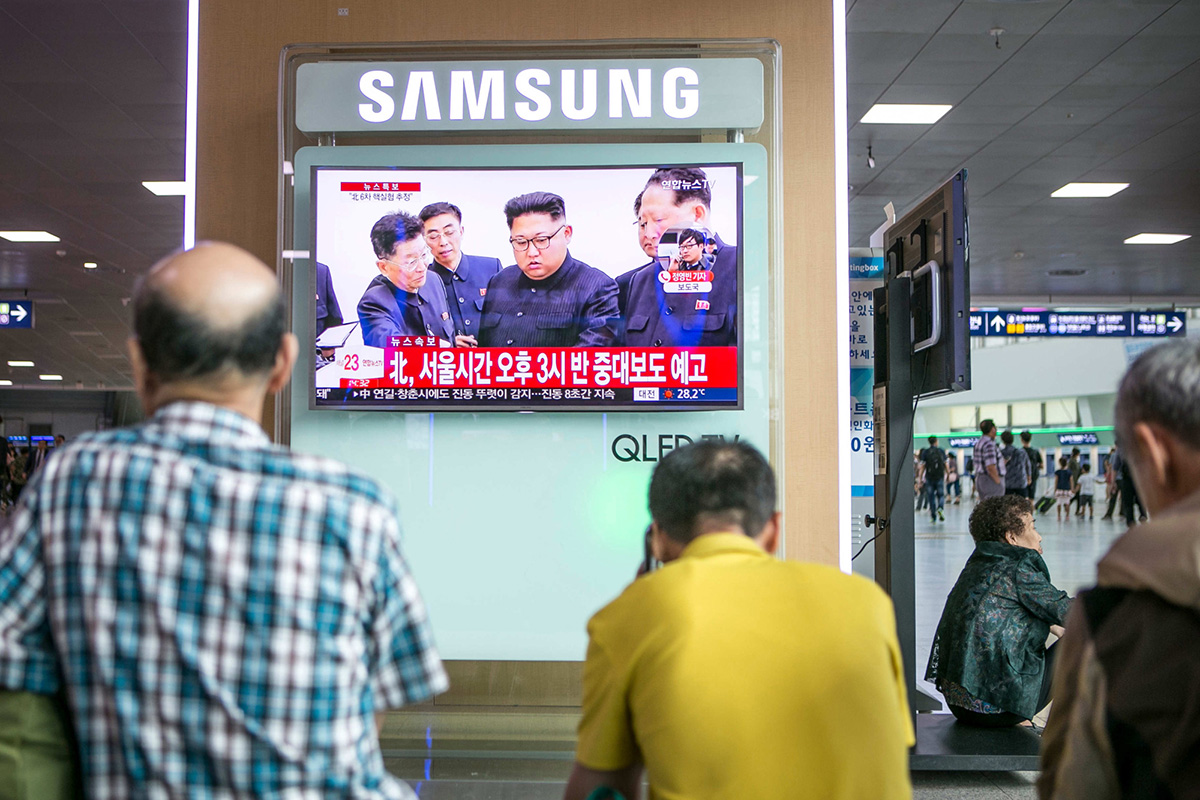North Korea fired its second missile over Japan in as many months, a fresh provocation that comes shortly after the United Nations approved harsher sanctions against Kim Jong-Un’s regime.
Japan didn’t attempt to shoot down the missile, which was launched at 6:57 a.m. on Friday and flew over the northern island of Hokkaido before landing 2,000 kilometres (1,200 miles) away in the Pacific Ocean, according to Japanese broadcaster NHK. An initial assessment indicated that it was an intermediate range ballistic missile, US Pacific Command said in a statement.
“These continued provocations against our country by North Korea can absolutely not be tolerated,” Yoshihide Suga, Japan’s government spokesman, told reporters. Japan’s benchmark Topix index was little changed in early Tokyo trading.
North Korea conducted its sixth and most powerful nuclear test on September 3, and has launched more than a dozen missiles this year as Kim seeks the capability to hit the continental US with an atomic weapon. President Donald Trump has said all options – including military – are on the table to stop North Korea from threatening the US.
Trump was briefed on Friday’s missile launch, White House Press Secretary Sarah Sanders said in a statement. In remarks at a White House dinner on Thursday night, he didn’t mention North Korea.
The UN Security Council plans to convene on Friday in New York, Yonhap News reported. Prime Minister Shinzo Abe was en route to Japan from India at the time of the launch on Friday, and didn’t speak to reporters immediately after landing.
Suga told reporters that the situation was similar to that when a missile was fired over Japan on August 29, NHK reported. North Korea had called that test a “meaningful prelude” to containing the American territory of Guam, and threatened to launch more missiles over Japan into the ocean.
The missile on Friday, fired from Pyongyang, flew 3,700 kilometres and reached an altitude of 770 kilometres, South Korea’s Joint Chiefs of Staff said. The intermediate-range missile fired on August 29 over Japan travelled 2,700 kilometres and reached an altitude of 550 kilometres.
In July, North Korea fired two intercontinental ballistic missiles on steep trajectories into the sea between the Korean peninsula and Japan. The regime said those launches put the entire US in its range.
South Korea’s military said it simultaneously conducted a drill in which it fired a ballistic missile into the East Sea, also known as the Sea of Japan.
Sink Japan
On Thursday, North Korea had threatened to sink Japan “into the sea” with a nuclear strike and turn the US into “ashes and darkness” for agreeing to the latest UN sanctions. The rhetoric prompted US Secretary of State Rex Tillerson to press China into cutting off oil exports.
“We hope China will not reject that or discard that as a very powerful tool, that they alone really have the ability to assert,” Tillerson said at a briefing in London with UK Foreign Secretary Boris Johnson. Echoing that sentiment, Johnson said there was room for China, North Korea’s top trading partner, to do much more, “particularly in respect to oil.”
China’s foreign ministry didn’t respond to faxed questions about the latest North Korea missile launch.
On Monday, the UN Security Council approved new sanctions after the US dropped key demands such as an oil embargo to win support from Russia and China, both of which can veto any proposals. The resolution seeks to limit oil imports, ban textile exports and increase inspections of ships suspected of carrying cargo in breach of sanctions.
North Korea’s first nuclear test since Trump took office was a “perfect success” and confirmed the precision and technology of the bomb, according to the Korean Central News Agency. Kim claimed that his regime could mount a hydrogen bomb onto an ICBM.
While North Korea’s ICBM threat is growing, the US military says it’s not yet imminent. Kim’s regime has yet to demonstrate that it can accurately guide a long-range missile to a target with a nuclear warhead that survives the trip, General Paul Selva, the No. 2 US military official said in a statement to Bloomberg last month.
“A full-out ICBM test could have really rattled the international community as a whole, so they decided to respond to the recent UN sanctions this way,” said Harry J. Kazianis, director of defence studies at the Center for the National Interest in Washington. “They could have been testing improvements in engine design or the re-entry vehicle.” – Bloomberg
